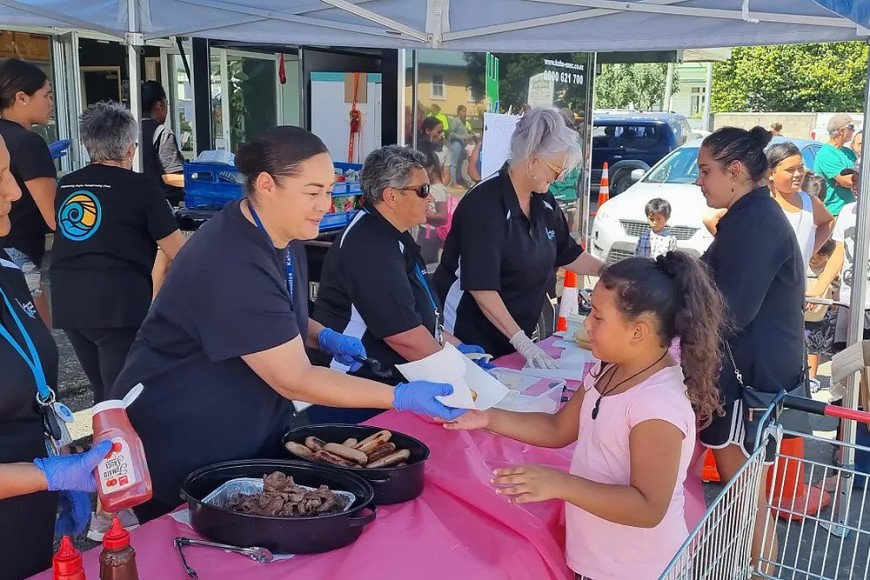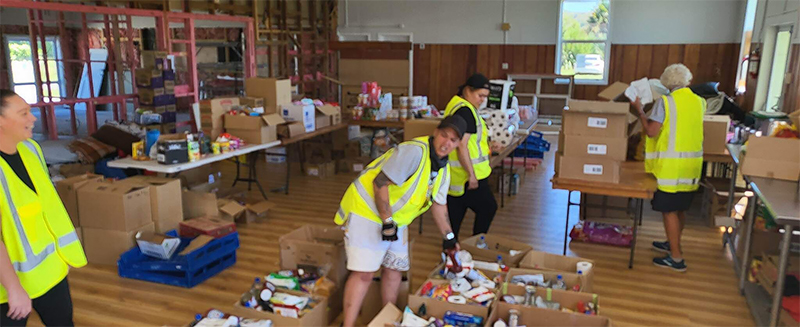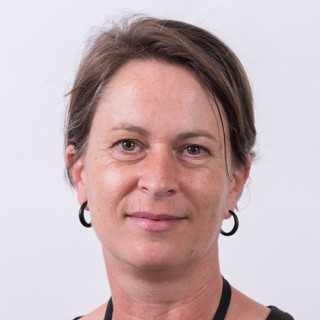
Volunteers hand out food in Wairoa, following Cyclone Gabrielle. Image: RNZ / Jonty Dine.
Manaaki Whenua senior researcher Dr Suzanne Vallance has spent over 15 years researching disaster recovery, and says she often noticed recoveries were gendered.
This sparked Suzanne’s research, funded by the Resilience to Nature’s Challenges National Science Challenge, to look at the role of women in two disasters: the recent devastation caused by Cyclone Gabrielle (February 2023) and the Kaikōura earthquake (November 2016).
In her work, Suzanne interviewed eight wāhine / women who undertook, and are still undertaking, recovery work from these disasters on behalf of their communities. “It was heartbreaking to hear their stories,” says Suzanne. “But what stood out to me was that their recovery work is not as visible as repaired bridges and new roads, but their restoration of ‘soft infrastructure’ must be better supported.”
For example, Suzanne’s research revealed that pre-disaster work in social, health and education services and voluntary work (such as fundraising for netball clubs and organising tangihanga) helped develop local knowledge, competencies and networks that proved highly useful for disaster recovery.
“It was women who had the connections and networks to look after the elderly, the young, provide safe houses and put the call out for household supplies – they were, and still are, on the frontline of recovery,” says Suzanne. Men see black and white, women see grey. Like when our people said they needed X but I could see that they also needed X and Y. Females look at black, white and grey. We look more further afield, not just at the now.

Te Pae o Waimihia (TPoW) sorting food packages
Further, globally, ‘natural’ disasters tend to kill more women than men and kill them at a younger age, and the picture for Aotearoa New Zealand is similar, says Suzanne. For example, in the 24 hours following the Christchurch earthquake on February 22, 2011, of the 182 deaths, 63 were male (35%) and 119 female (65%). Of those hospitalised, 33 (36%) were male and 58 (64%) were female.
“We know that disasters amplify pre- existing social trends and norms, some of which discriminate against women and increase their vulnerability: lower pay, less secure housing, job insecurity and domestic violence,” says Suzanne. “Effective disaster risk reduction would proactively address these inequities and not wait for disasters to amplify them.
“Disasters are not ‘natural’ but to call them ‘man-made’ is provocative. Given disasters discriminate based on gender, disaster management cannot be gender-blind,” says Suzanne.
“Given their roles in recovery, the support women need is different to men, and we need to anticipate these needs.”
Recovery conversations need to happen at times and in places that suit women, funding for community- led recovery activities needs to be easier to get, and the strengthening and rebuilding of infrastructure that women and children use needs to be prioritised, says Suzanne.
Next steps in this research include gaining more qualitative data, and Suzanne says she is determined to continue this area of research.
Watch: Women and Cyclone
Key contact

